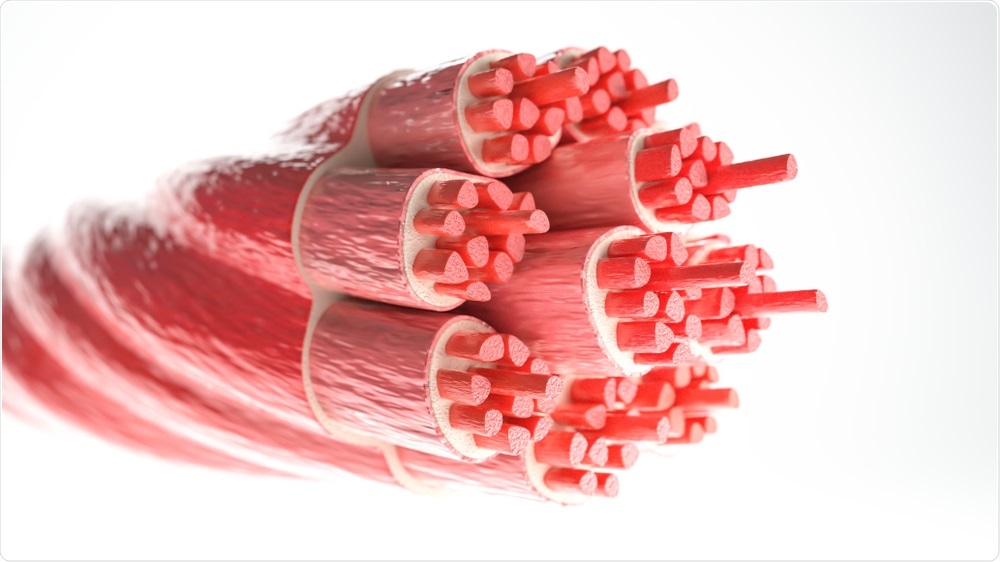Novel research carried out by Dr Stefan Schiller and Dr Matthias Huber of the University of Freiburg’s livMatS Cluster of Excellence showed outstanding progress in creating a muscle using only natural proteins.

Image Credit: Crevis/Shutterstock.com
The material’s autonomous contractions can be monitored using pH and temperature variations. The movements are propelled by a chemical reaction that uses molecular energy to do so. The findings were published in the journal Advanced Intelligent Systems.
Our artificial muscle is still a prototype. However, the high biocompatibility of the material and the possibility of adjusting its composition to match particular tissue could pave the way for future applications in reconstructive medicine, prosthetics, pharmaceutics, or soft robotics.”
Dr Stefan Schiller, livMatS Cluster of Excellence, University of Freiburg
Researchers have previously used natural proteins as a foundation to develop artificial muscle systems, transforming them into tiny molecular machines or polymers. However, it has still not been possible to build synthetic muscle materials that are completely bio-based and move independently using chemical energy.
Material based on the natural protein elastin
The Freiburg team’s material is based on elastin, a natural fibrous protein found in humans that provide elastic properties to the skin and blood vessels. Based on the framework of this protein, the researchers created two elastin-like proteins, one of which reacts to pH fluctuations and the other to temperature variations.
The researchers used photochemical cross-linking to merge these two proteins to create a bi-layered material. In this process, the material can be shaped adaptively and the orientation of its motion can be determined.
Contractions can be switched on and off with the help of temperature changes
The researchers were able to induce rhythmic contractions by using a chemical energy source, in this case sodium sulfite, as fuel. The additional energy was transformed into electrical energy via non-equilibrium states of the substance in an oscillating chemical change in which the pH shifts in cycles due to a special connection of several responses. Using this method, the researchers were then able to induce the material to bind independently in a cyclical pattern.
Researchers were also able to shift the contractions on and off using changes in temperature: At a temperature of about 20 °C, the oscillating chemical reaction started, and the material began to move in rhythmic patterns.
It was possible to configure certain states for the material to suspect and then reboot them with another stimulus during the procedure. As a result, the researchers developed a simple system for implementing learning and overlooking at the material level.
Since it is derived from the naturally occurring protein elastin and is produced by us through biotechnological means, our material is marked by a high sustainability that is also relevant for technical applications. In the future, the material could be developed further to respond to other stimuli, such as the salt concentration in the environment, and to consume other energy sources, such as malate derived from biomass.”
Dr Stefan Schiller, livMatS Cluster of Excellence, University of Freiburg
Source:
Journal reference:
Huber, M. C., et al. (2022) An Autonomous Chemically Fueled Artificial Protein Muscle. Advanced Intelligent Systems. doi.org/10.1002/aisy.202100189.